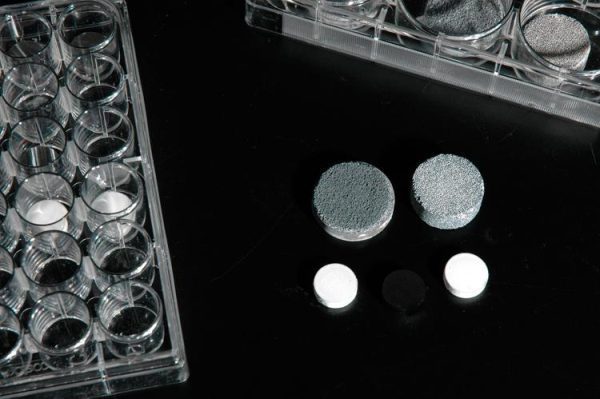Bioceramics Lead to Advanced Cancer, Bone Treatment

“By using biomedical materials we can take drugs directly to the area needed, without impacting the rest of the body,” Dr. El-Ghannam said. “It is a way to deliver specific drug concentrations to a specific area for a specific period of time to cause healing.” The drug will not go to the blood and therefore will not hurt other healthy organs in the body.
Collaborating with Carolinas Medical Center, the researchers in Dr. El-Ghannam’s lab are developing porous ceramic particles that can be infused with anticancer drugs. The particles are then pressed into disks and surgically implanted into cancerous areas.
“The material has a very controlled rate of dissolution, so we can control the amount of drug released with great accuracy,” Dr. El-Ghannam said. “It is also a resorbable ceramic, so it does not have to be removed.”
Dr. El-Ghannam is developing a two-part ceramic material (biphasic) for the treatment of ortharthiritis conditions. In cases where cartilage has worn away and bone is rubbing bone, there is the need to regenerate both bone and cartilage.
“The drugs for treating bone and cartilage are different,” El-Ghannam said, “so we are developing a biphasic implant. One part stimulates the growth of cartilage and other the growth of bone.”
The biphasic implant is surgically placed in the cartilage defect and fixed in the bone beneath it. The two halves of the implant are made of different ceramic materials that have different crystalline properties and porosity. The material in each half is loaded with different drugs.
The lower part of the implant releases a drug (rhBMP2) that enhances bone formation. The upper part of the implant releases another growth factor (rhBMP7), which has a strong stimulatory effect on new cartilage formation. As the new tissues form and fill the defect, the bioceramic is gradually resorbed by the body. The new cartilage will be fully integrated with the new bone similar to natural healthy case.
Additional research in Dr. El-Ghannam’s lab includes work for DePuy Orthopedics, Inc (a Johnson & Johnson company) in the coating of artificial hip and knee implants with bioceramic material. Such coatings are desired to produce active cell growth and good bone adhesion to the implants in the body. The coating process is performed using electrochemical technique developed in the lab followed by thermal treatment to strengthen the adhesion between the bioactive ceramic coating and the metal implants. Implants coated with bioactive ceramic are expected to have significantly better fixation and longevity.
For more information contact Dr. El-Ghannam at arelgha@uncc.edu